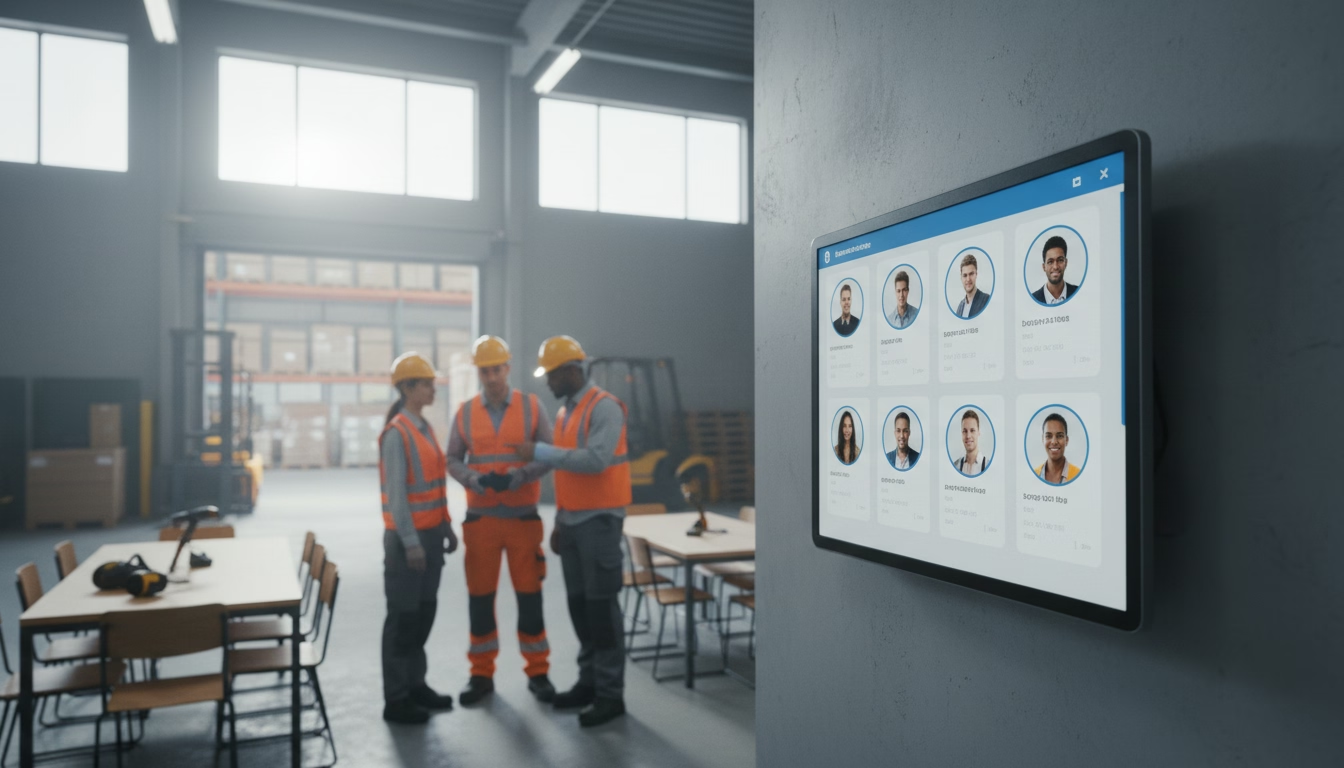· ShiftFlow Editorial Team · Glossary · 6 min read
What Is Career Progression? Definition, Examples & Guide
Learn what career progression means, how it differs from career advancement, typical progression paths in shift-based industries, strategies to accelerate growth, and how to create development plans for your team.

What Is Career Progression?
What does career progression mean? Career progression is the gradual advancement through increasingly responsible positions within an organization or industry over time. It represents your entire professional journey from entry-level roles to senior positions, including promotions, skill development, expanded responsibilities, and both vertical and lateral moves.
Quick Answer
Career progression is the continuous path of professional growth over time, typically advancing from entry-level to leadership roles through promotions, skill development, and increased responsibility every 2–5 years.
According to the Bureau of Labor Statistics, the median employee tenure is 4.1 years, with progression happening through formal promotions, skill acquisition, mentorship, on-the-job experience, and strategic positioning within your field. Research from LinkedIn’s Workforce Learning Report shows that 94% of employees would stay longer at companies that invest in their career development.
Career Progression vs Career Advancement
| Aspect | Career Progression | Career Advancement |
|---|---|---|
| Definition | Continuous journey of growth | Specific upward move |
| Scope | Includes lateral moves and skill growth | Focused on promotions and title changes |
| Timeline | Ongoing throughout entire career | Discrete events (getting promoted) |
| Measurement | Overall trajectory and development | Pay increases and title changes |
| Focus | Long-term career arc | Short-term achievement |
Career progression encompasses your entire professional journey, including times when you develop new skills or take on additional projects. Career advancement specifically refers to moving up in title, pay, or authority. For example, a warehouse team member who becomes cross-trained in inventory management is experiencing career progression even without a formal promotion. When promoted to shift lead, that’s career advancement—one milestone within their broader progression.

Typical Career Progression Timelines
| Career Stage | Typical Timeline | What It Looks Like |
|---|---|---|
| Entry-level to Team Lead | 2–3 years | Master core role, train others, minor decisions |
| Team Lead to Supervisor | 3–4 years | Manage small team, scheduling, performance reviews |
| Supervisor to Manager | 4–5 years | Oversee multiple teams, budgets, strategic planning |
| Manager to Senior Manager | 5–7 years | Lead departments, cross-functional projects |
Timelines compress in high-growth companies or for exceptional performers, and extend in regulated industries or slower-growth organizations.
What Are Career Progression Paths in Shift-Based Industries?
Manufacturing and Warehousing: Production Associate → Lead Operator/Shift Lead → Supervisor → Operations Manager. Typical progression: 2–3 years to shift lead, 3–4 years to supervisor, 4–5 years to operations manager.
Hospitality and Food Service: Server/Line Cook → Shift Supervisor → Assistant Manager → General Manager. Typical progression: 2 years to shift supervisor, 3 years to assistant manager, 4 years to general manager.
Healthcare: CNA/Medical Assistant → Charge Nurse → Nurse Manager. Licensed roles (RN, LPN) accelerate advancement. CNA to charge nurse requires RN licensure. 3–5 years from RN to charge nurse, 5–7 years to nurse manager.
Retail: Sales Associate → Department Lead → Assistant Store Manager → Store Manager. Typical progression: 1–2 years to department lead, 2–3 years to assistant manager, 3–5 years to store manager.
How Can You Accelerate Career Progression?
Exceed Performance Expectations: Document achievements with metrics (reduced waste by 15%, improved on-time delivery to 98%, trained 12 new team members).
Seek Additional Responsibilities: Volunteer for projects outside your core role, lead improvement initiatives, or cover for supervisors during absences.
Pursue Relevant Certifications: Industry-specific credentials (forklift certification, food safety manager, OSHA training) demonstrate commitment and readiness for advancement.
Build Relationships with Leaders: Develop mentorship relationships with managers and senior leaders. Express interest in growth through regular catch-up meetings and ask for feedback.
Cross-Train in Multiple Roles: Understanding different functions makes you more valuable and positions you for broader leadership roles.
Communicate Your Goals: Have regular career development conversations with your manager. Make your advancement interests known.
Document Your Contributions: Keep a running record of projects completed, problems solved, and skills developed to support promotion conversations.

Creating Career Progression Plans for Teams
Define Clear Pathways: Document the skills, experience, and competencies required for each role level. Make progression criteria transparent.
Provide Development Opportunities: Offer training programs, mentorship, job shadowing, and stretch assignments to prepare team members for advancement.
Set Regular Check-ins: Hold quarterly or semi-annual career development discussions separate from performance reviews using structured catch-up meetings.
Recognize Progression Beyond Promotions: Acknowledge skill development, project leadership, and increased responsibility even when formal promotions aren’t available.
Create Lateral Movement Options: Not every career path is vertical. Offer opportunities to move between departments or specialties.
Track and Support Growth: Use workforce management tools to track certifications, training completion, and readiness for advancement.
According to the Society for Human Resource Management, organizations with formal career development programs experience 34% higher retention rates. Many organizations struggle with progression planning for shift workers and hourly teams, but clear pathways reduce turnover and improve engagement.
What Are Effective Career Progression Strategies?
✅ Accelerate Your Progression By:
- Exceeding performance expectations with documented results
- Volunteering for high-visibility projects and leadership opportunities
- Pursuing industry-specific certifications and training
- Building mentorship relationships with senior leaders
- Communicating advancement goals during regular check-ins
⚠️ Common Progression Blockers:
- Not expressing advancement interest to managers
- Missing required certifications or demonstrated competencies
- Limited visibility with decision-makers
- Inconsistent performance or attendance issues
- Organizational structure with few advancement openings
What Slows Career Progression?
Limited openings in small organizations or flat structures may restrict advancement opportunities. Missing required certifications, education, or demonstrated competencies delays progression. Inconsistent performance or attendance disqualifies candidates for advancement.
Weak internal relationships—not being known by decision-makers or lacking leadership advocates—limits visibility. Managers can’t support growth if team members don’t express advancement interest through regular catch-up meetings. Some fields require specific degrees, licenses, or years of experience that can’t be accelerated.
The Bottom Line
Career progression is the continuous journey of professional growth through skill development, increased responsibility, and advancement from entry-level to senior roles. Typical progression takes 2–5 years per level, and can be accelerated through consistent performance, skill-building, relationship development, and regular catch-up meetings with managers.
For shift-based workers in full-time jobs, clear progression pathways, cross-training opportunities, and supportive management make the difference between long-term growth and stagnation.
ShiftFlow’s workforce management platform can help you track training, certifications, and readiness for advancement to support career development more effectively.
Sources
- Bureau of Labor Statistics – Employee Tenure Summary
- Society for Human Resource Management – Career Development
- LinkedIn Workforce Learning Report
Further Reading
- Catch-Up Meeting Guide – Supporting career conversations
- Full-Time Job Benefits – Understanding employment status
- Moonlighting Policies – Managing multiple roles
Frequently Asked Questions
What is career progression?
Career progression is the gradual advancement through increasingly responsible positions within an organization or industry, including promotions, skill development, and expanded responsibilities over 2–5 years per level.
What is the difference between career progression and career advancement?
Career progression is the continuous journey of growth over time, including lateral moves and skill development. Career advancement specifically refers to upward movement like promotions or title changes.
How long does career progression take?
Typical progression timelines range from 2–5 years per level. Entry-level to team lead takes 2–3 years, team lead to supervisor takes 3–4 years, and supervisor to manager takes 4–5 years.
How can I accelerate my career progression?
Exceed performance expectations, seek additional responsibilities, pursue relevant certifications, build relationships with leaders, cross-train in multiple roles, and communicate your advancement goals clearly through regular manager check-ins.




